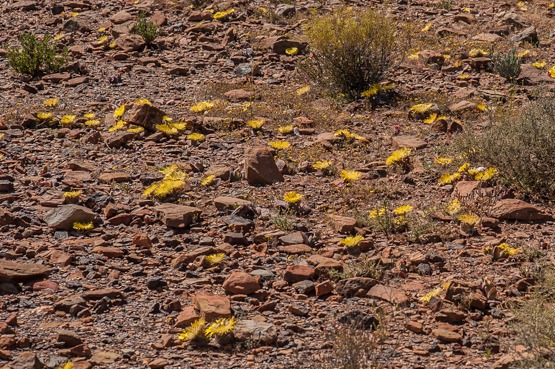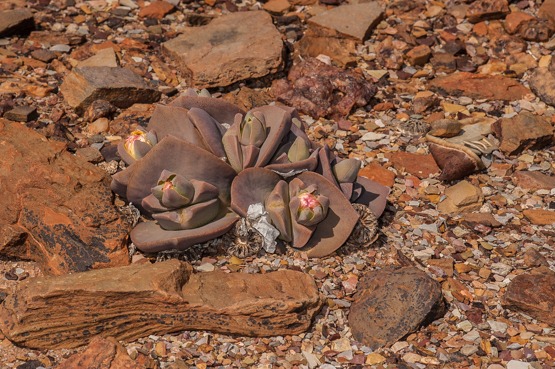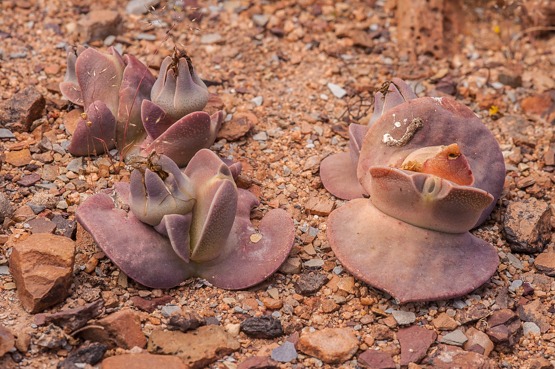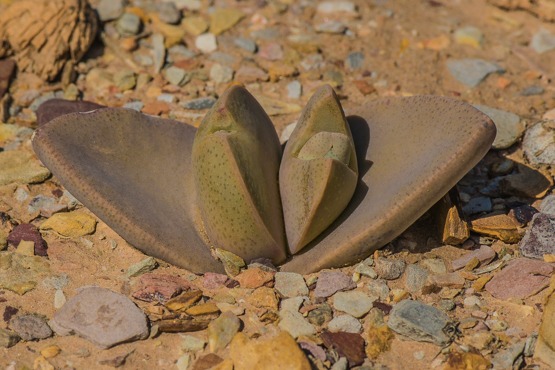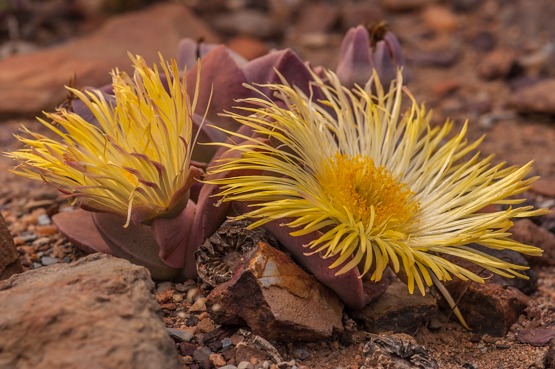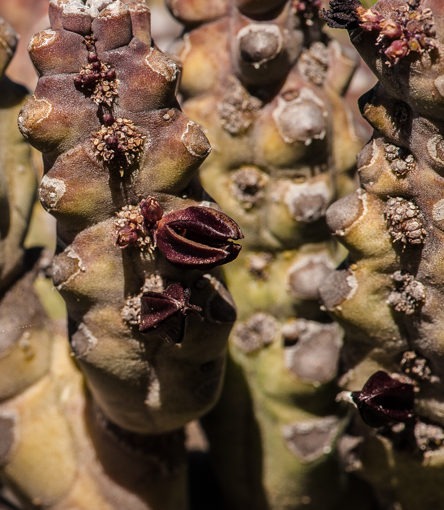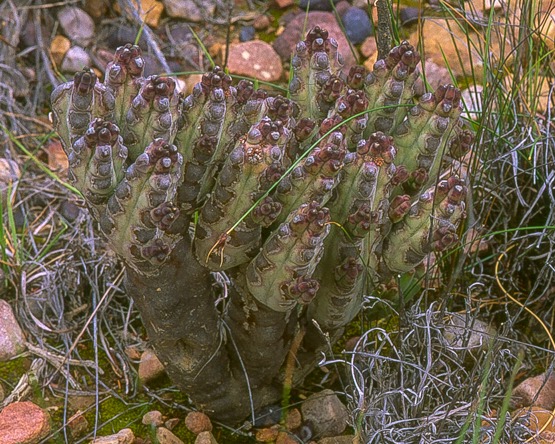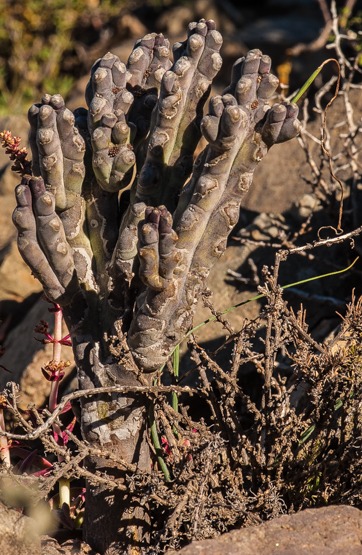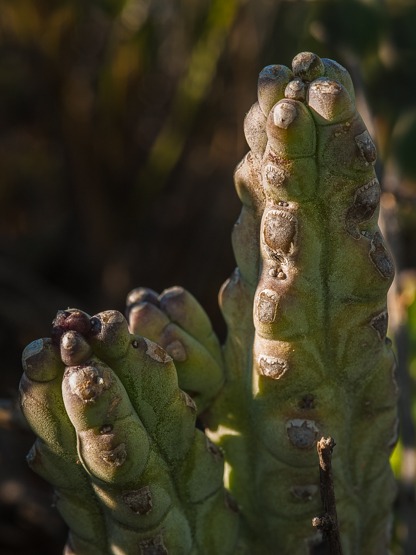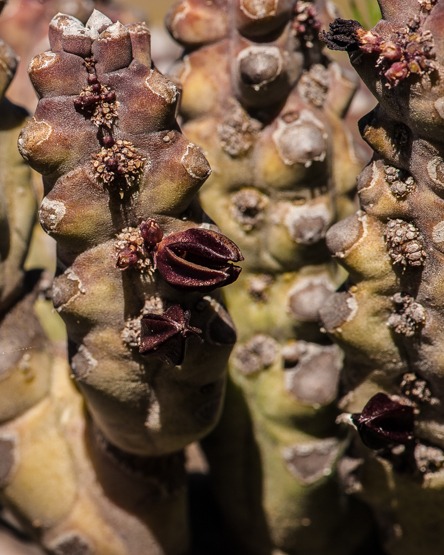A peculiar species indeed and therefore easy to recognise.
The plants are up to 5 cm tall, usually with up to 3 branches. They form two types of leaf pairs: in the first one the leaves are flat and largely free. In the second pair they are upright and fused for more than half their length; this pair becomes dry and papery in summer, so that the new growth is protected from drying out.
The flowers very large (up to 6 cm in diameter) and appear in Aug.-Sept.
Found on shale flats and gneiss slopes in northern Namaqualand (from Springbok to north and west of Steinkopf), an area with 100-200 mm rainfall per year (in winter).
